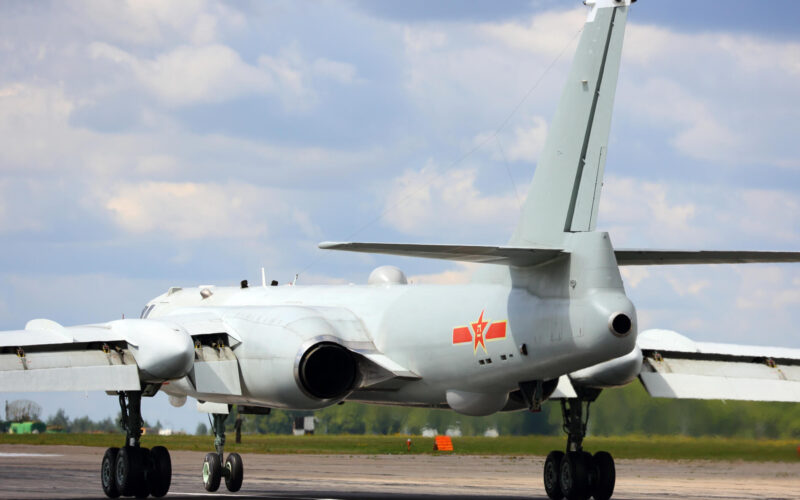Footage emerged online of a Chinese H-6N strategic bomber carrying what appears to be a supersonic anti-ship weapon. The existence of such a weapon in the Chinese arsenal had not been officially confirmed so far.
A few pictures and a video shared by a planespotter on social media showed an H-6N strategic bomber landing. The aircraft is an evolution of the Xian H-6K strategic bomber, itself derived from the Russian Tupolev Tu-16. It boasts an improved range thanks to the addition of an aerial refueling probe, and attachment points under the airframe to carry large hypersonic weapons.
— OedoSoldier (@OedoSoldier) October 17, 2020
Thus, some speculate that the missile that can be seen attached to the undercarriage of the aircraft is a DF-21 hypersonic anti-ship missile, also known as the CH-AS-X-13. Such a weapon represents a great asset for the People’s Liberation Army against carrier groups. In August 2019, following the broadcast of a DF-21 live firing, a Chinese military source commented to the South Morning China Post: “This is China’s response to the potential risks brought by the increasingly frequent incoming US warplanes and military vessels in the South China Sea.”
China with the DF-21 and Russia with the Zircon and Kinzhal missiles have both been at the vanguard of hypersonic weapon development. In May 2020, a Russian military source announced that a new hypersonic anti-ship missile, most likely a variant of the Kh-47М2 Kinzhal missile, had been successfully tested from a Tu-22M3M strategic bomber.
The United States seems to be lagging behind when it comes to hypersonic weapons. It is currently developing two different weapons: the HAWC (Hypersonic Air-breathing Weapon Concept) and the ARRW (Air-launched Rapid Response Weapon). A third program, the Hypersonic Conventional Strike Weapon (HCSW), was canceled due to budget constraints in February 2020.

